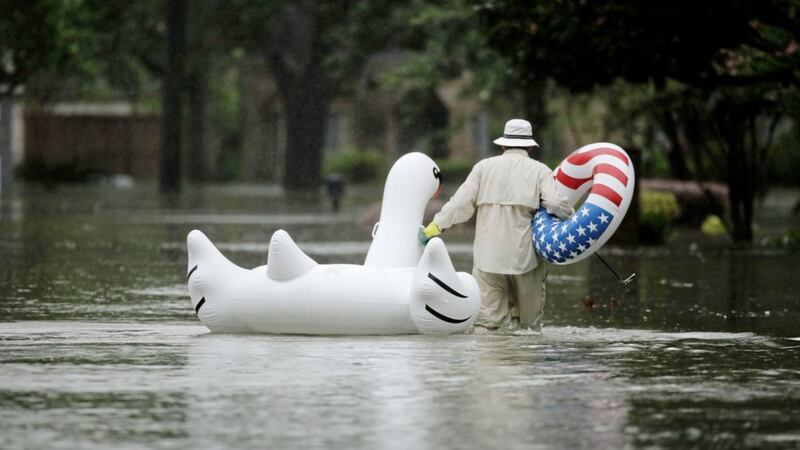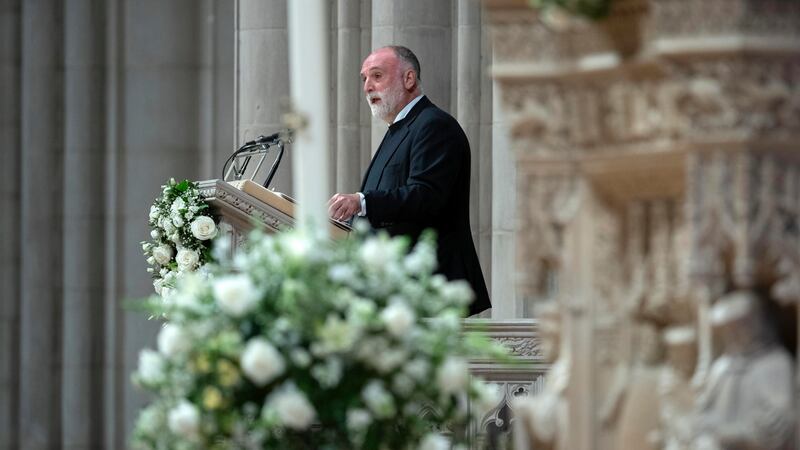CATASTROPHIC flooding overwhelming Houston and other parts of Texas will worsen in the coming days and then be slow to recede once Hurricane Harvey finally moves on, the director of the National Weather Service in the US has warned.
Louis Uccellini said up to 20 inches (51cms) of rain could fall in the coming days, on top of the more than 30ins (76cms) some places have already seen.
He told a news conference that some of the heaviest rainfall on Monday, at a pace of six inches (15cms) an hour, will fall east of Houston in places such as Beaumont and Lake Charles, Louisiana.
While Houston is experiencing a break from the rain, heavy downpours are forecast to return later today.
Louisiana's Governor John Bel Edwards asked President Donald Trump for a federal emergency declaration for Louisiana. The declaration was later issued by the president for five parishes in south-west Louisiana. However, the governor could add more areas to the request later.
Mr Edwards said life-saving efforts such as search and rescue and shelters are needed, especially in south-west Louisiana where forecasters say 10 to 20ins (25 to 51 cms) of rain could fall.
Despite the rain easing temporarily in Houston, the city was braced for more flooding as officials started releasing even more water from reservoirs overwhelmed by Harvey.
The strategic engineering move, aimed at protecting the centre of Houston, could make already devastating flooding worse around thousands of homes.
Harvey, which made landfall late on Friday as a Category 4 hurricane and has lingered dropping heavy rain as a tropical storm, sent devastating floods pouring into Houston on Sunday.
Rising floodwater sent thousands of people clambering on to rooftops or higher ground and overwhelmed rescuers who could not keep up with the constant calls for help.
Harris and Fort Bend county officials initially said residents near the Addicks and Barker reservoirs should be prepared for the barrage of water about to be released.
Officials warned residents to pack up and leave.
Those living near the reservoirs designed to help prevent flooding in down town Houston, were warned that a controlled release would cause additional street flooding and could spill into homes.
Rising water levels and continuing rain was putting pressure on the dams that could cause a failure without the release.
Meanwhile, officials in Fort Bend County, Houston's south western suburbs, issued widespread mandatory evacuation orders along the Brazos River levee districts.
County Judge Robert Herbert said at a news conference that National Weather Service officials were predicting that the water could rise to 59ft, three feet above 2016 records and what Herbert called an "800-year flood level".
Incessant rain has covered much of Houston in turbid, grey-green water and turned streets into rivers navigable only by boat.
In a rescue effort that recalled the aftermath of Hurricane Katrina, helicopters landed near flooded freeways, airboats buzzed across submerged neighbourhoods and high-water vehicles ploughed through water-logged intersections. Some people managed with kayaks or canoes or swam.
Volunteers joined emergency teams to pull people from their homes or from the water.
Judging from federal disaster declarations, the storm has so far affected about a quarter of the Texas population, or 6.8 million people in 18 counties. It was blamed for at least two deaths.
The White House announced that President Donald Trump would visit Texas today.








